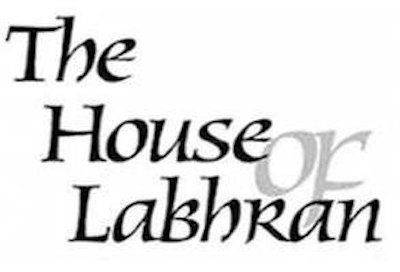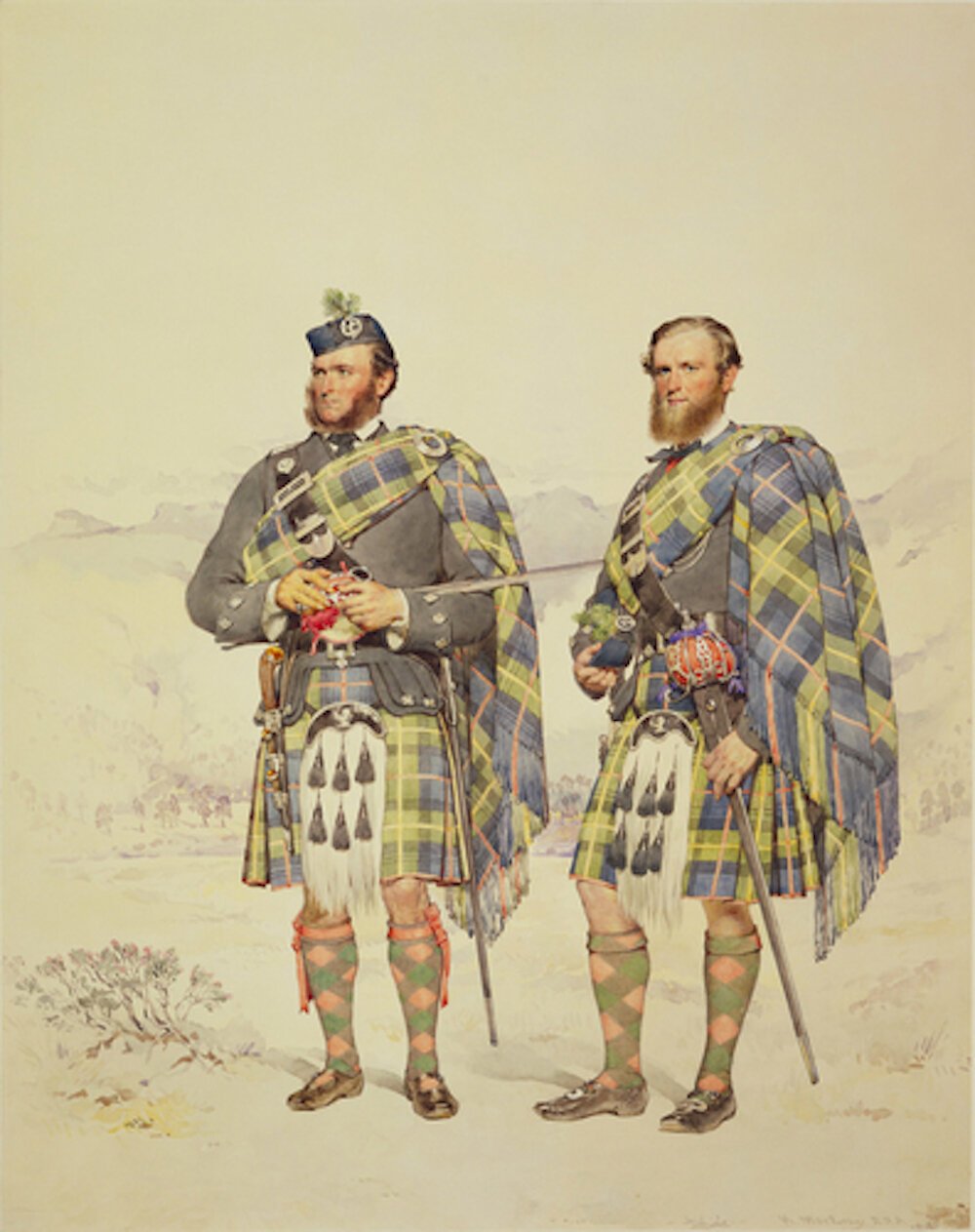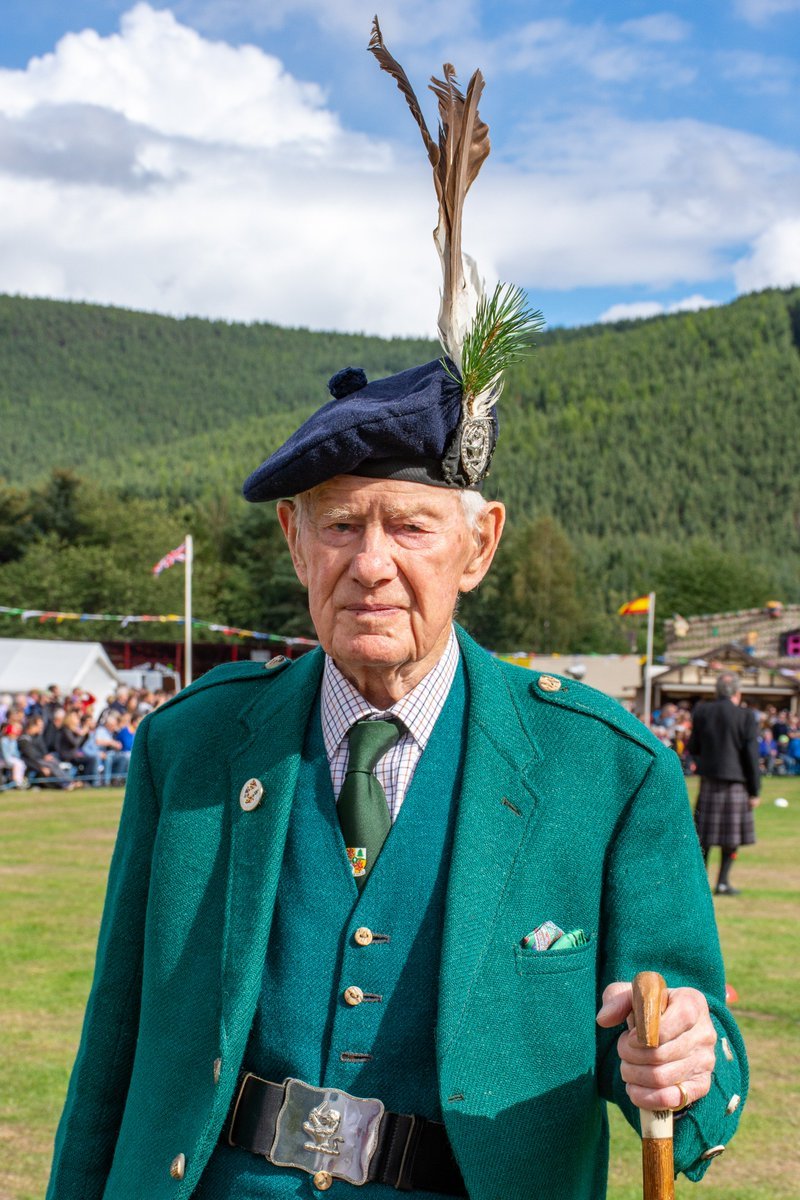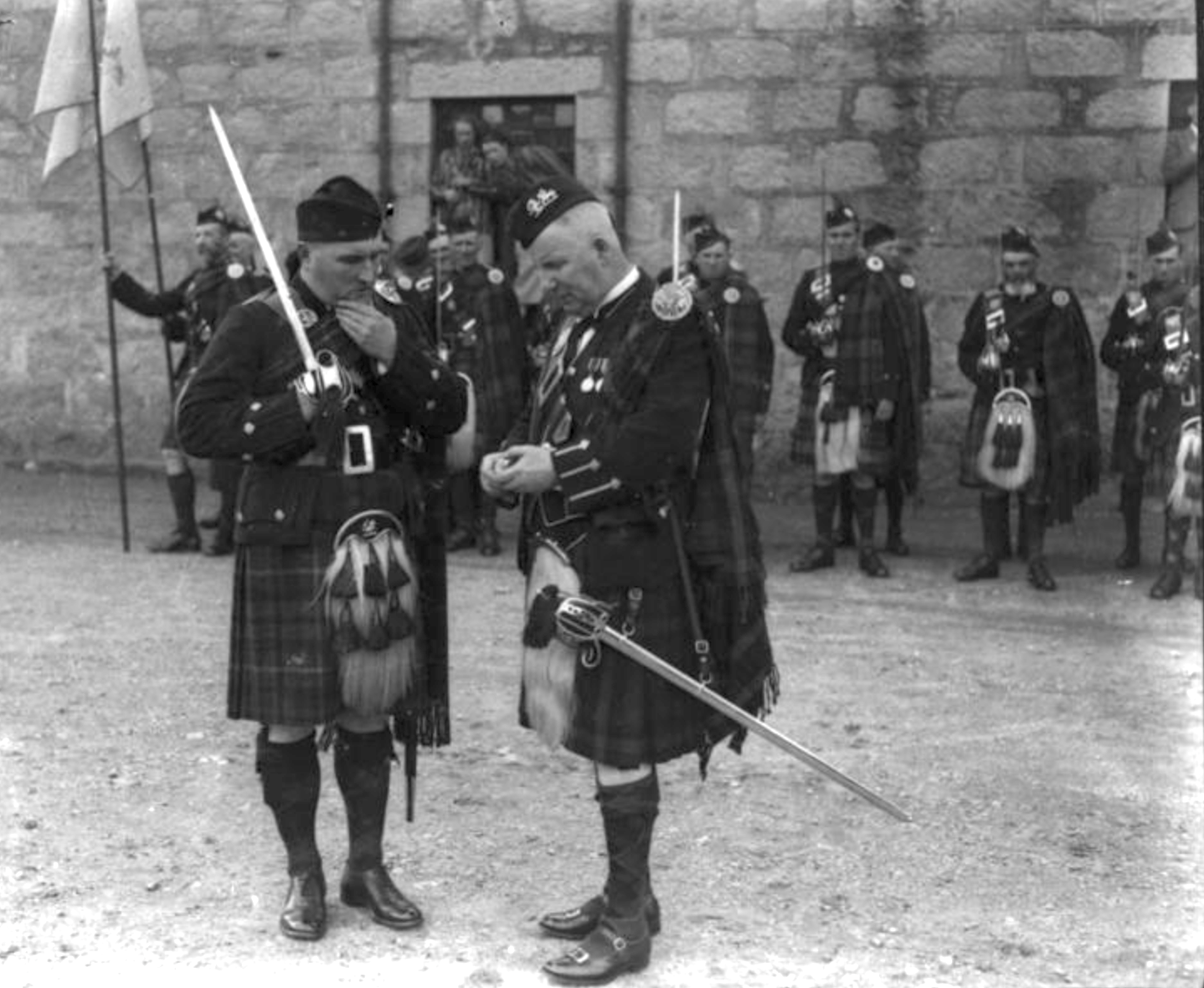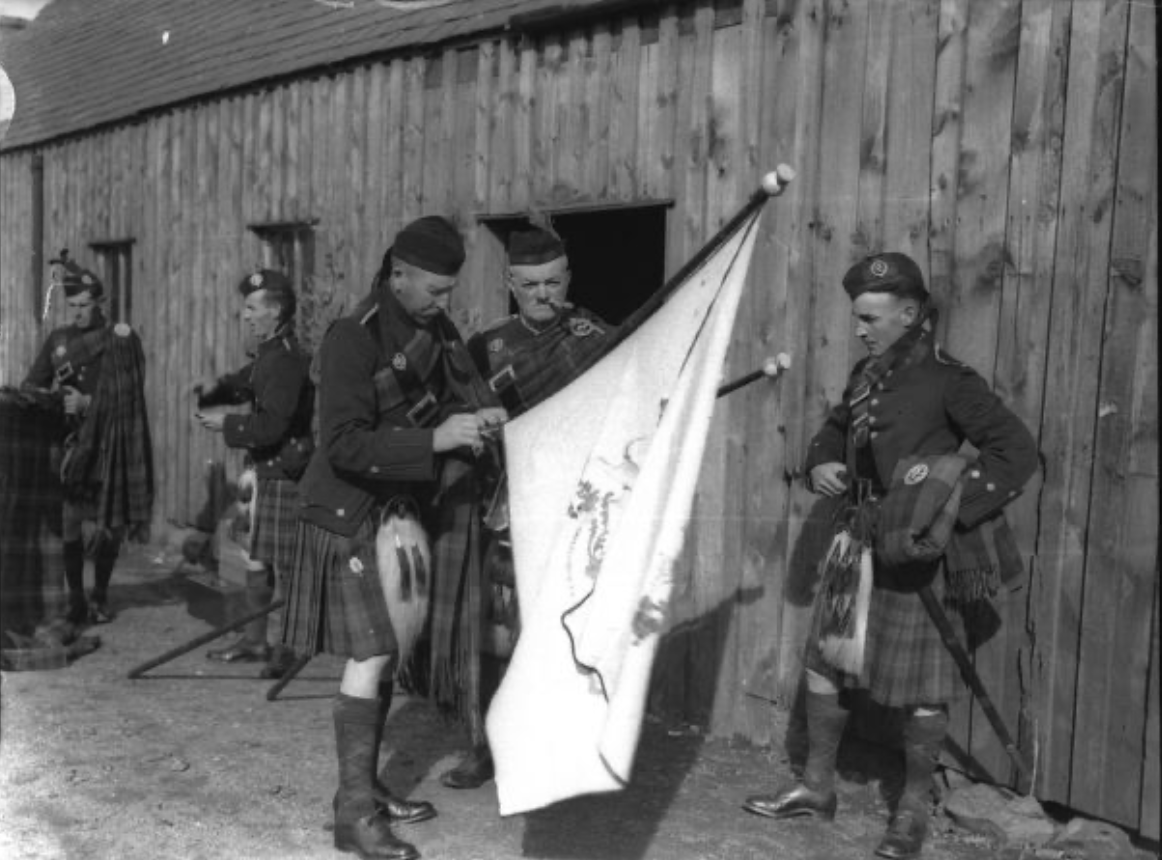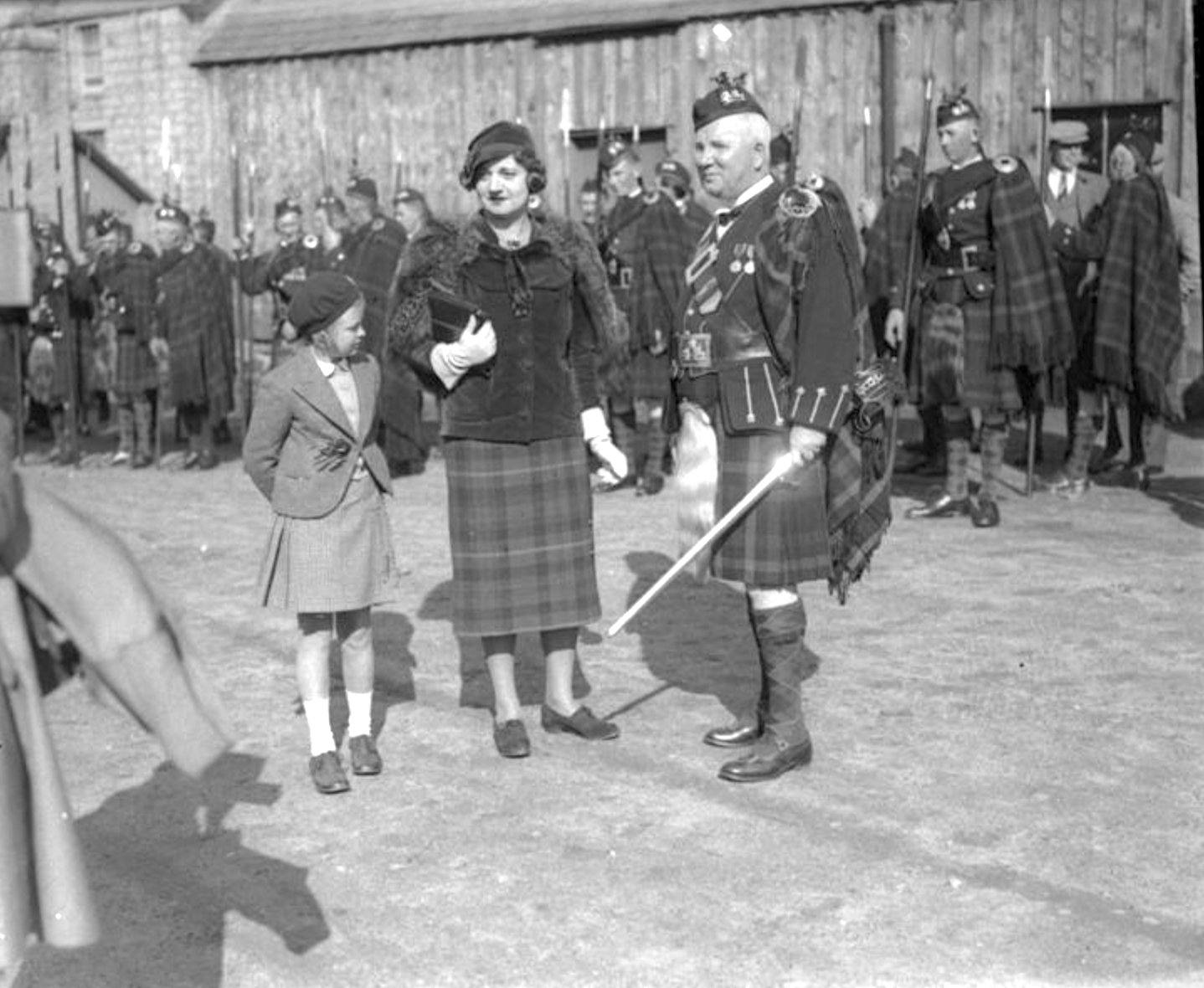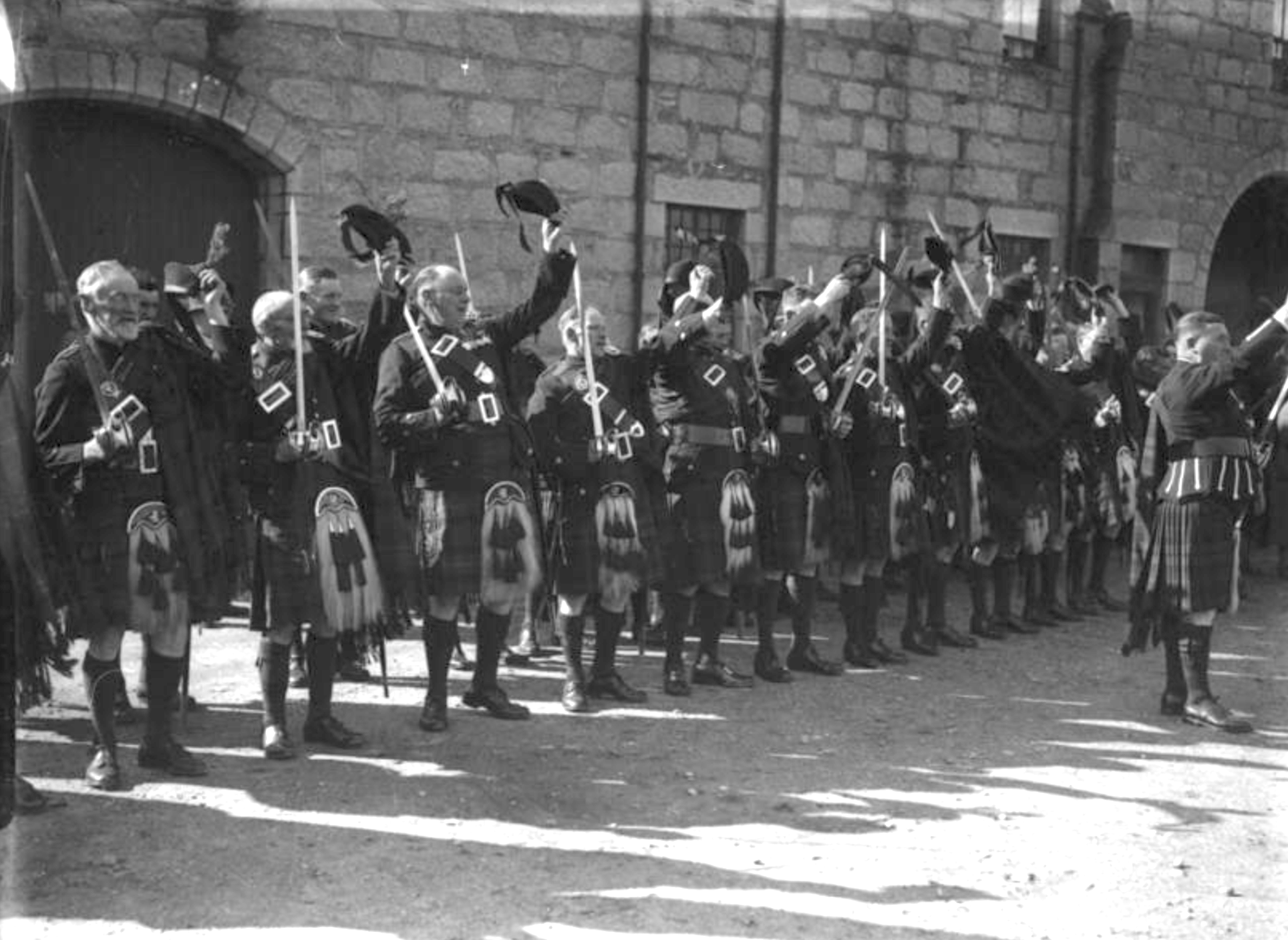Victorian Pattern Farquharson Clan & Invercauld Highlanders Badge
An Original Victorian Farquharson Clan & Invercauld Highlanders Badge
Invercauld Men watercolour by Kenneth Macleay as commissioned by Queen Victoria - circa 1870 © RCT
Victorian pattern Farquharson Clan & Invercauld Highlanders Badge
The region of Royal Deeside and Strathdon has been the home to various groups of marching men and ‘ Friendly Societies ‘ since the early nineteenth century. They were formed by local lairds with the principal aims of the preservation of Highland Dress and the Gaelic language; to support loyal, peaceable manly conduct and the promotion of social and benevolent feelings among the inhabitants of this district.
These have included the Balmoral Highlanders, Lonach Highlanders, Duff Highlanders and Invercauld Highlanders.
One of the early reference sources for the Victorian Highland revival style of the Invercauld Highlanders - Farquharsom men has to be the monograph of watercolours commissioned by Queen Victoria and undertaken by artist Kenneth MacLeay and published in 1870.
One watercolour is of two men that worked on the Invercauld estate for Colonel Farquharson. Both are depicted wearing the Farquharson tartan in the uniform of the Invercauld Highlanders. James Bowman who was an estate forester and William Brown are shown with Forest of Invercauld in the background.
The formation date of the Invercauld Highlanders is unknown. A group of the Clan Farquharson men did march in front of King George IV on his trip to Edinburgh on August 16th 1822. It is thought that the group formed at some point between the end of the Act of Proscription on July 1st 1782 and the founding of the Braemar Wrights Friendly Society in July 1815. They turned out as a group of marching men for over one hundred years and their final march was during the 1938 Braemar Gathering.
76 years after the last time they marched, the Invercauld Highlanders were rediscovered by a small group of members of the Clan Farquharson in North America. In December 2014 Captain Farquharson of Invercauld was presented with the desire to reform the group. Happily on December 26, 2014 the permission was granted that the Invercauld Highlanders of North America could form. Today the group is growing in size both in North America and locally in Scotland.
We were lucky enough to recently acquire an a pair of original Victorian Farquharson clan and Invercauld Highlanders badges.
Due to interest in this original pattern it was decided our our regimental silversmith would make museum quality copies of the original Victorian pattern badge in fine silver plate and solid silver.
This pattern was not only used as a bonnet badge as worn by clansmen and the late Captain Alwyne Arthur Compton Farquharson of Invercauld and Monaltrie was the 16th chief of Scottish Clan Farquharson. However, it was also worn on the Invercauld Highlanders as a baldric badge on their cross belt.
To order your vintage pattern Farquharson - Invercauld clan badge, please visit our vintage bonnet badge page. Shop here
FAMILY - Farquharson
MOTTO - Fide et fortitudine - By fidelity and fortitude
BLAZON - A Demi-Lion Gu., Holding In The Dexter Paw A Sword Ppr.
SOURCE - Fairbairn's Book of Crests, 1905 ed.
Captain Alwyne Arthur Compton Farquharson of Invercauld and Monaltrie was the 16th chief of Scottish Clan Farquharson.
An Original Victorian Farquharson Clan & Invercauld Highlanders Badge
Modern version of the Farquharson clan crest.
On a chapeau, Gules, furred Ermine, a demi-lion, Gules, holding in his dexter paw a sword, Proper
The origins of Clan Farquharson
The chiefs of the Clan Farquharson trace their ancestry back to Farquhar, fourth son of Alexander "Ciar" Shaw of Rothiemurchus. Alexander Shaw was the fifth chief of the Clan Shaw. His descendants took the name Farquharson. Another of Alexander's sons was Donald, who married Isobel Stewart, the heiress of Invercauld. Donald's son was Finla Mor who was the real progenitor of the clan. MacFionlaigh Mòr is the Scottish Gaelic patronymic. Finla Mor was the royal banner bearer at the Battle of Pinkie Cleugh in 1547 where he was killed. However he produced nine sons over two marriages from which the important cadet branches of the clan were sprung and the clan grew in stature. In 1595 the Clan Farquharson joined the Chattan Confederation and a bond of manrent acknowledged the chief of Clan Mackintosh, who was also chief of Clan Chattan as their "natyff cheiff".
During the Jacobite rising of 1715 another John Farquharson of Invercauld was a colonel in the Chattan Confederation regiment which supported James Francis Edward Stuart. John was taken prisoner at the Battle of Preston (1715). He was held at Marshalsea Prison and was condemned to be executed at the Tower of London, however he and two other highland officers were reprieved on the morning of execution. He was paroled and not allowed to return to Scotland for over twenty years. General Wade's report on the Highlands in 1724, estimated the combined clan strength of the Farquharsons and Mackintoshes at 800 men.
In 1745 the strength of the Clan Farquharson was estimated as 500 by Duncan Forbes, Lord Culloden. On 23 December 1745, 300 men of the Clan Farquharson had fought as Jacobites in their victory at the Battle of Inverurie (1745). During the Jacobite rising of 1745, the cousin of John Farquharson was Lady Anne Farquharson-MacKintosh who was wife of Angus Mackintosh, chief of Clan Mackintosh. Angus Mackintosh was in fact a serving officer in the Black Watch regiment of the British Army and he was captured at the Battle of Prestonpans by Jacobite forces. Mackintosh was sent home to Moy having been given parole not to take arms against the Jacobites and when he arrived he was greeted by his wife, Anne Farquharson, who said "Your servant, captain" to which he replied "Your servant, colonel".
She was ever after known as Colonel Anne. Anne later saved Charles Edward Stuart from capture in what is known as the Rout of Moy. Anne was imprisoned for six weeks after the Battle of Culloden. Francis Farquharson of Monaltrie led the Farquharsons at the Battle of Culloden and although he survived he was imprisoned and was condemned to death, but was lucky enough to have his execution reduced to exile.
The modern Clan Farquharson
Alwyne Arthur Compton Farquharson, Chief of the Name and Arms of Farquharson, 16th Baron of Invercauld and Omnalprie, MC, JP; as recognised by Lord Lyon King of Arms died on 6th October 2021. Born 1st May 1919 as Alwyne Arthur Compton, son of Major Edward Robert Francis Compton, of Newby Hall, Ripon, Yorkshire, and of Torloisk, Aros, Isle of Mull, Scotland ( grandson of William Compton, 4th Marquess of Northampton ) and Sylvia Farquharson of Invercauld, he was confirmed MacFionnlaidh by Lyon Court in 1949, having taken the name of Farquharson.
He served with distinction as a Captain in the Royal Scots Greys during World War Two. Captain Farquharson resided at Valley Farm, Norfolk with his second wife, Madame Patricia Farquharson.
He is succeeded by his great-nephew Philip.
